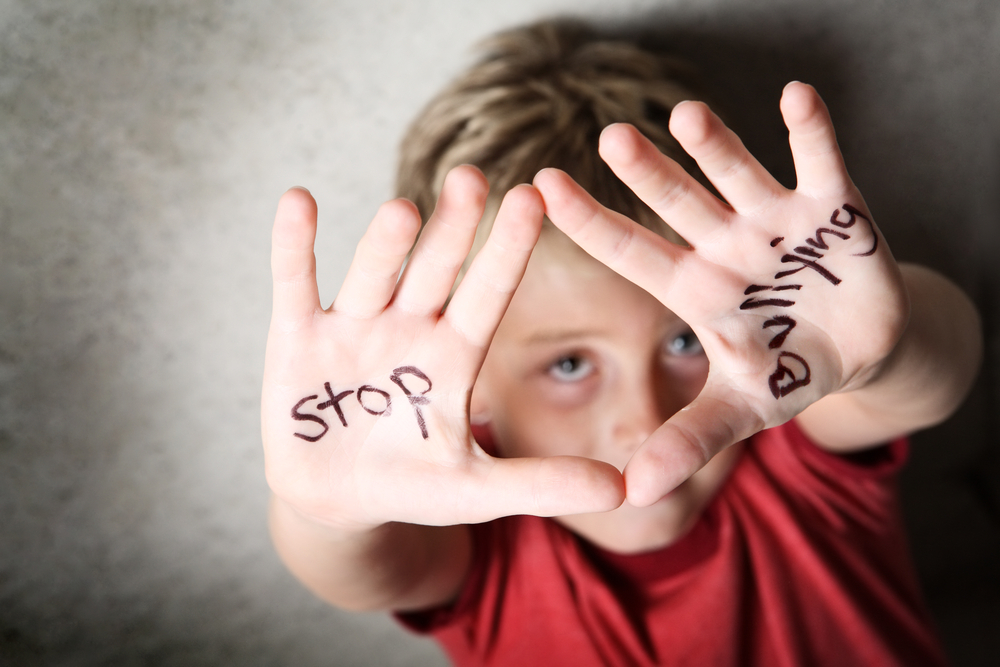Stamping out bullying in early childhood services
Published on Tuesday, 13 March 2018
Last updated on Wednesday, 08 December 2021

Friday this week (16 March) is Australia's National Day of Action against Bullying and Violence, the key anti-bullying event for schools and communities. While bullying is not typically ascribed to children in the early years, bullying behaviours can start to appear as children start socialising and learning to relate to each other and witnessing how their behaviours impact others.
Learning how to relate to other people is one of the most important skills children learn in in the young years, and early childhood services are often the first opportunity children have to independently interact with people outside their immediate families. This gives early childhood educators an important and influential role in teaching children how to build positive and inclusive relationships.
According to bullying awareness group Eyesonbullying.org, bullying among young children usually progresses in a well-defined pattern. For example, a young child may start targeting and dominating a vulnerable peer after being exposed to similar behaviour at home or on the television.
If the child's dominating and coercive behaviour is ignored by parents and early childhood educators it is likely to increase, both in impact and the number of victims targeted. In addition, bystander children who witness the perceived success or power of the 'bully' over the victim may be tempted to join in, which, over time, can lead to the establishment of power hierarchies and persistent bullying behaviours over the same victim(s). Bullying behaviours can include consistent and targeted exclusion, physical harm and aggression, name-calling and threatening not to play with someone.
The good news is early childhood settings offer a fertile teaching ground for lessons around bullying and young children are usually very eager learners. To prevent bullying behaviours from escalating into actual bullying, early childhood educators need to take a multi-faceted approach, which addresses environmental factors as well as inter-personal dynamics between children.
Educators can:
- Discuss and role model positive behaviour and teach young children a variety of strategies to make friends and interact with their peers. Some children may need explicit teaching about the words and actions they need to be successful. Reinforcing behaviour standards through developmentally appropriate praise is also effective (e.g., "catch" children in the act of relating well with peers and quickly reward them with praise), they can also help children ‘join in' and take turns playing with each other, and practice inclusive play. On the flipside educators can correct wrongdoings by discussing the physical and emotional consequences that a child may experience as a result of harmful words and actions.
- Set clear rules for behaviour, monitor children's interactions carefully and step in quickly to stop aggressive behaviour or redirect it before it occurs. Keep in mind that it is not enough to set rules with consequences for inappropriate behaviour. Young children need constant reminders on how they are expected to behave and, if they break the rules, should be given matter-of-fact explanations about why their behaviour was hurtful and unacceptable.
- Be vigilant and keep an eye out for persistent bullying type behaviours which seem to be escalating, consistent or targeted. Communicate with parents and try and implement an action plan to ensure corrective behaviour is applied at home and in the early childhood service.
- Value kindness. Though young children may not understand the term "bullying" or how it differs from other forms of aggression (or "being mean"), educators can talk about behaviours that hurt others and those that demonstrate kindness and inclusion. The most important message to consistently reinforce is that aggression is not acceptable at any time and under any circumstances.
- Use age-appropriate consequences for aggressive behaviour. Educators can ask children to make simple reparations for harm caused by their aggression (whether accidental or "on purpose"). Adults can help children find an action that is intended to “correct” the hurt or damage they may have done (e.g. help rebuild a knocked over block structure, replace a torn paper or crayons, or say or do something friendly or kind). When sincere, it may also be appropriate to encourage children to say: "I'm sorry." Educators can help children learn the difference between sincere and insincere apologies and explain why they are important.
- Teach children how to substitute alternative behaviours for aggression, by role modelling the use of non-aggressive words and actions and praising and reinforcing positive behaviours when they are identified.
- Tell children who feel upset or victimised that it is okay to share their feelings with an educator. Children may need regular reminders about what they should do if they witness bullying behaviour or if they are treated in a way which makes them feel unhappy, excluded or hurt. An effective strategy to teach children is to hold their palm upright, say "STOP" and immediately find an adult. Educators may need to explain to children the difference between 'dobbing' and reporting bullying
Action group Bullying. No Way! has developed a range of early childhood resources to and a free app help young children learn how to get on with their peers and solve their problems without resorting to physical or verbal aggression.
References:
Stopbullying.gov
Eyesonbullying.org
Related Articles

Bullying in child care
An overview of bullying in child care settings; includes the types of bullying, what to do about it and how to develop an age-appropriate anti-bullying policy.

The link between bullying and depression
How childhood bullying may contribute to depression later in life.

Supporting early childhood friendships
Social interaction, bonding with peers, and establishing and maintaining friendships are important developmental milestones that offer children many benefits.

